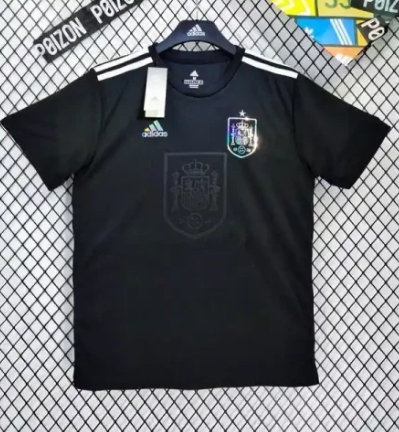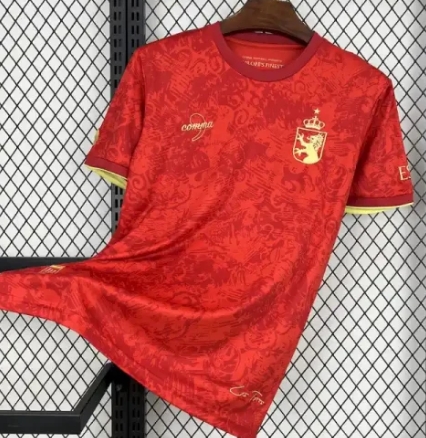Spain soccer jerseys football YUPOO china B2B2C Wholesale Supplier Branded national Spain soccer jerseys retro shirts, join us on whatsapp | Yupoo fashion Spain soccer jerseys players jerseys football retro jerseys reseller online store , Yupoo jerseys Replica top version for yupoo wholesale drop shipping jerseys to worldwide.
Spain, a nation known for its passionate love for football, boasts a storied history that intertwines the beautiful game with the cultural identity of its people. The evolution of Spain's soccer jerseys not only reflects changes in fashion and design but also encapsulates the milestones of a national team that has left an indelible mark on global football. This article explores the history, significance, and cultural impact of Spain's soccer jerseys, shedding light on how these garments have become symbols of pride, unity, and passion.
Football made its way to Spain in the late 19th century, gaining traction especially in the Catalonia region, where various clubs were formed. The Spanish Football Federation was established in 1913, and Spain's national team played its first official match in 1920 during the Olympic Games held in Antwerp. Initially, the jerseys worn by players were simplistic, with varying designs that did not yet embody a cohesive national identity.
As the sport grew in popularity, so did the significance of the jerseys, with clubs and national teams alike adopting colors and designs that represented their pride and heritage. The national team adopted red and yellow, reflecting the colors of the Spanish flag. This choice solidified a sense of national unity as players donned these colors on the international stage.
The 1980s marked a pivotal era for Spain's soccer jerseys, coinciding with the national team’s first appearance in a World Cup as hosts in 1982. The kits from this period often featured bold designs typical of the fashion of the time, combining bright colors and distinct patterns that captured the era's vibrancy. Iconic players like Emilio Butragueño and Fernando Hierro wore these jerseys, heightening their significance in the eyes of fans.
The 1990s saw further evolution. The introduction of more streamlined designs and the use of synthetic materials transformed the jerseys. The 1994 World Cup in the United States saw Spain sporting a bright red kit with yellow accents, which reflected a modern approach while still honoring traditional colors. However, the team's performance on the pitch wasn't reflective of the jersey's appeal; Spain was eliminated in the group stage.
The early 2000s heralded a new chapter for Spanish football, culminating in the team's unprecedented success from 2008 to 2012. This "Golden Era," marked by triumphs in the Euro 2008, FIFA World Cup 2010, and Euro 2012, saw not only a shift in the team’s performance but also in the aesthetic of their jerseys.
The 2008 UEFA European Championship saw a beautifully designed red jersey, accented with yellow, which heroes like Andrés Iniesta and Xavi Hernández wore during their successful campaign. The jersey became a symbol of hope and pride, as it accompanied a team that finally broke past historical disappointments.
In 2010, during the FIFA World Cup in South Africa, Spain's home kit maintained its iconic red color but featured a more refined and modern look, incorporating details that reflected the team’s winning spirit. The synergy between the team’s performance and the visual identity of the jersey created an unforgettable connection for fans.
The 2012 Euro brought another iteration of the jersey, maintaining the core elements of red and yellow while further diversifying the designs with innovative materials that improved player performance. The success on the pitch was mirrored by the jersey's widespread popularity, selling in massive quantities worldwide.
Spain's soccer jerseys have transcended the realm of sports to become potent cultural artifacts. They evoke feelings of nostalgia and national pride, often worn not only during matches but as everyday attire, especially during international competitions. Wearing the jersey has become a rite of passage for many Spaniards, symbolizing allegiance to the national team.
Every match day, streets come alive with fans adorned in red and yellow, creating a sea of color that unites people from various backgrounds. The emotional connection that fans have with the jerseys speaks volumes about their importance in national identity.
In recent years, Spain's soccer jerseys yupoo have embraced modern design trends while incorporating traditional elements. The balance between heritage and contemporary style is critical as the team continues to evolve. The jerseys produced by major sportswear brands have increasingly utilized advanced technology to enhance comfort and durability, reflecting the needs of today’s athletes.
Notably, the incorporation of specific features, the streets of Spain transform into a sea of red and yellow as fans proudly wear their team’s jerseys. This fervor for the national team transcends age, class, and geographical boundaries, showcasing football as a unifying force.
The emergence of social media has also amplified the cultural significance of these jerseys. Fans now connect and share their experiences, wearing jerseys to show support during matches, even from afar. This digital space allows new generations to engage with

